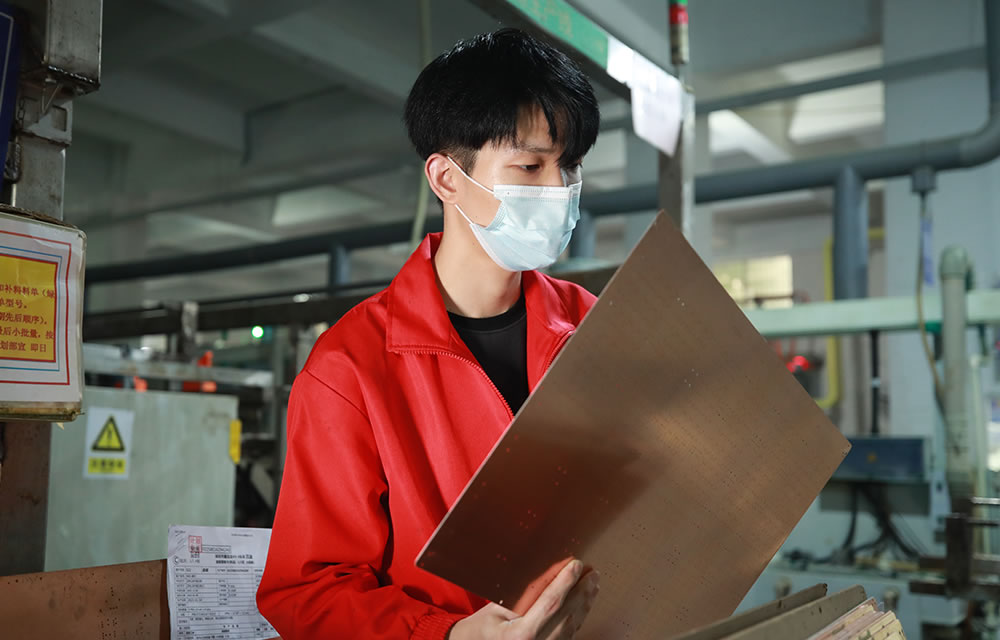FR-4 material, this is the abbreviation of glass fiber cloth, it is a kind of raw material and substrate circuit board , the general single, double-sided and multi-layer circuit board are made of this! It is a very conventional plate! Such as Shengyi, Jiantao (KB), Jin An Guoji are the three major domestic manufacturers, such as only do FR-4 materials of circuit board manufacturers: Wuzhou Electronics, Penghao Electronics, Wanno Electronics, they are doing this product very well manufacturers.
For a long time;Printed circuit boards (PCBs) have been part of several electronic circuits.As a result, most of the electrical engineers involved in the production of these circuit boards are familiar with the different materials used to make them.FR4 is one of the most popular materials used to make PCBs.What makes materials popular?
Here pls allow me to introduce the various aspects of FR4 materials used in printed circuit boards.
Introduction of FR4 materials
FR in FR4 represents a flame retardant, and the number 4 distinguishes the material from other materials in this class.FR4 is a glass fiber reinforced epoxy laminate that looks like a thin woven cloth sheet.The term FR4 also represents the grade used to make these laminates.The fiberglass structure provides structural stability for the material.The glass fiber is covered with flame retardant epoxy.This gives the material durability and strong mechanical properties.All of these features make The FR4 printed circuit board very popular among electronic contract manufacturers.The FR4 printed circuit board is also popular for the following reasons:
FR4 is a low-cost material.
It has a high dielectric strength, which contributes to its electrical insulation performance.
The material has a high strength-to-weight ratio and is light in weight.
It is moisture-proof and has a relative temperature.
The material has good electrical dissipation property.
FR4 does not absorb water, so it is suitable for all kinds of Marine PCB applications.
Materials are yellow to light green, ideal for any application.
All of these features make it suitable for a variety of environments.
How is FR4 organized on conventional FR4 printed circuit boards?
FR4 serves as the basis for any PCB.The material is laminated with copper foil.Use heat and adhesive to laminate.Copper foil can be used to laminate material from one or both sides.
Tips for choosing the correct FR4 material for your FR4 printed circuit board
Using the right thickness of material is important for building FR4 PCBS.Thickness is measured in inches, such as thousands, inches, or millimeters.
There are a few things to consider when choosing a FR4 material for your PCB.The following tips will simplify your selection process:
L Select thin FR4 materials for building panels with space constraints.Thin materials can support the various sophisticated components needed to build the device, such as Bluetooth accessories, USB connectors, etc.They are also suitable for large projects where engineers want to focus on space-saving designs.
L thin FR4 materials are suitable for applications requiring flexibility.For example, using thin materials for automotive and medical PCBS is ideal because these PCBS need to be bent regularly.Avoid choosing thinner materials for a grooved PCB design, as this increases the risk of damage or circuit board rupture.
L The thickness of the material can affect the weight of the printed circuit board and may also affect component compatibility.This means that the thin FR4 material will logically facilitate the manufacture of lightweight circuit boards, which in turn lead to lightweight electronics.These lightweight products are attractive and easy to transport.
When to avoid using FR4 material
FR4 material is not the right choice if your application requires any of the following:
Excellent heat resistance
FR4 is not recommended if PCB is to be used in high temperature environments.For example, THE FR4 material is not the right choice for PCB in aerospace applications.
L Lead-free welding
If your customer requires A PCB conforming to RoHS, lead-free welding must be used.During lead-free soldering, the reflux temperature may reach a peak of 250 ° C, and due to its low temperature resistance, the FR4 material cannot withstand it.
L High frequency signal
When exposed to high frequency signal, the FR4 plate cannot maintain stable impedance.As a result, fluctuations occur and may affect the integrity of the signal.
Due to their popularity and wide use, today it is easy to find FR4 PCB materials on the market with a variety of specifications and functions.Such rich choices sometimes make choices difficult.In this case, it is important to discuss your requirements with the manufacturer.




